How to organise a fridge: The best way to organise your fridge to keep food fresher for longer
We bet you've been keeping your milk in the wrong place all this time...
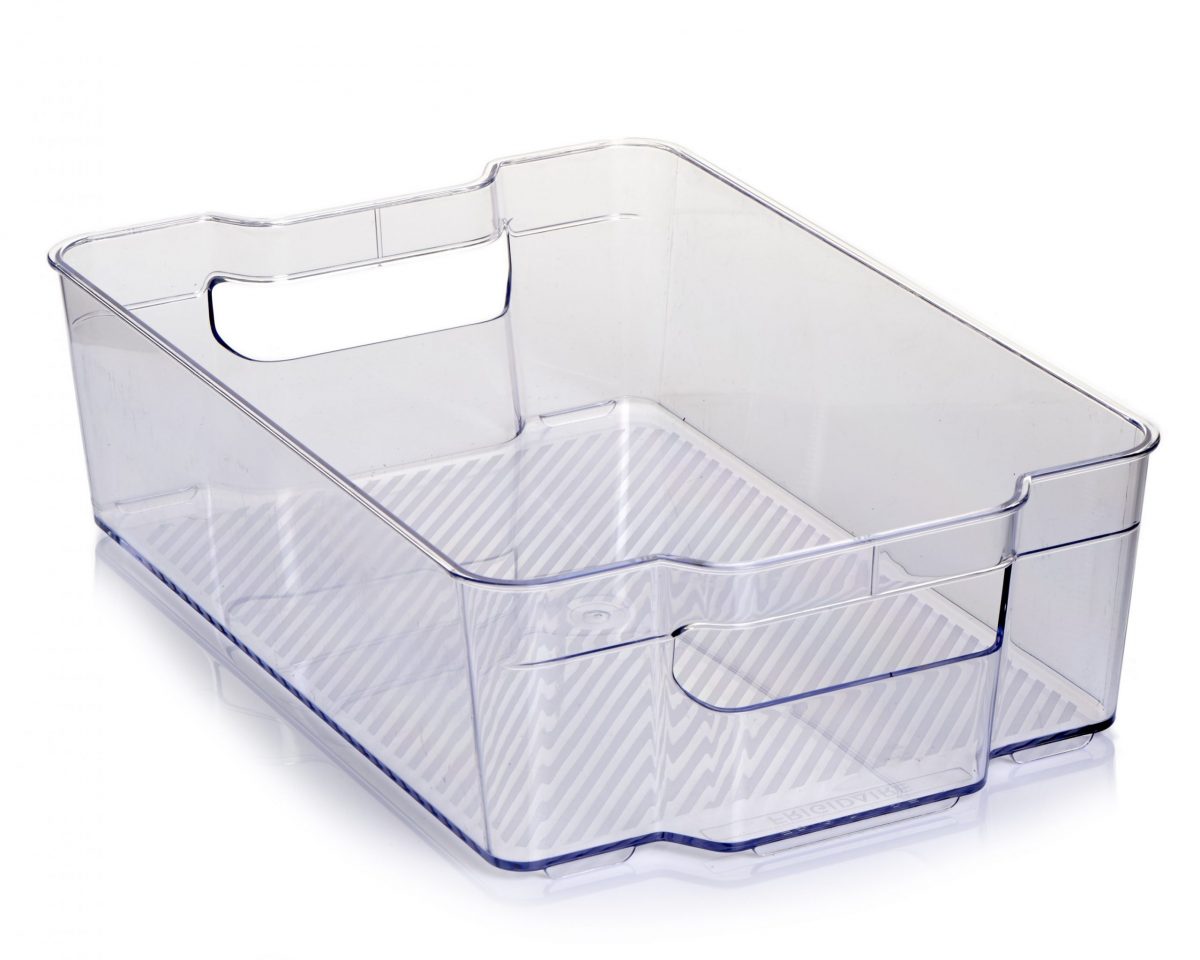
Fridge organising; is now a thing, a trend, something the Insta influencers and cool people are doing. And there's more to it than you think.
When it comes to organising your fridge it's not just the Food Technology 101 of ‘raw meat on the bottom’, there are now fridge Lazy Susans, super storage hacks and clever containers you can use.
Yes, organising your fridge is a trend that’s here to stay. And it’s not just so it looks great, it can also keep your family free from food poisoning and save you money in the long run.
A well-organised fridge along with maintaining a cool and consistent temperature will ensure that you’re storing food correctly, which will also help you to minimise sickness and food waste.
Savings site VoucherCodes.co.uk conducted a study in 2019, revealing that the average UK household throws away £355.68 worth of food every year, equating to a startling £9.7billion across the country annually.
Keeping your fridge organised can help keep your food fresher and make it last longer, reducing waste, which will also save you money. It's a win win.
To find out more about where you should be keeping those everyday items stored in your fridge, take a look at our handy guide. Time to get organising!
GoodtoKnow Newsletter
Parenting advice, hot topics, best buys and family finance tips delivered straight to your inbox.
How to store food in a fridge
What should you keep in the door?
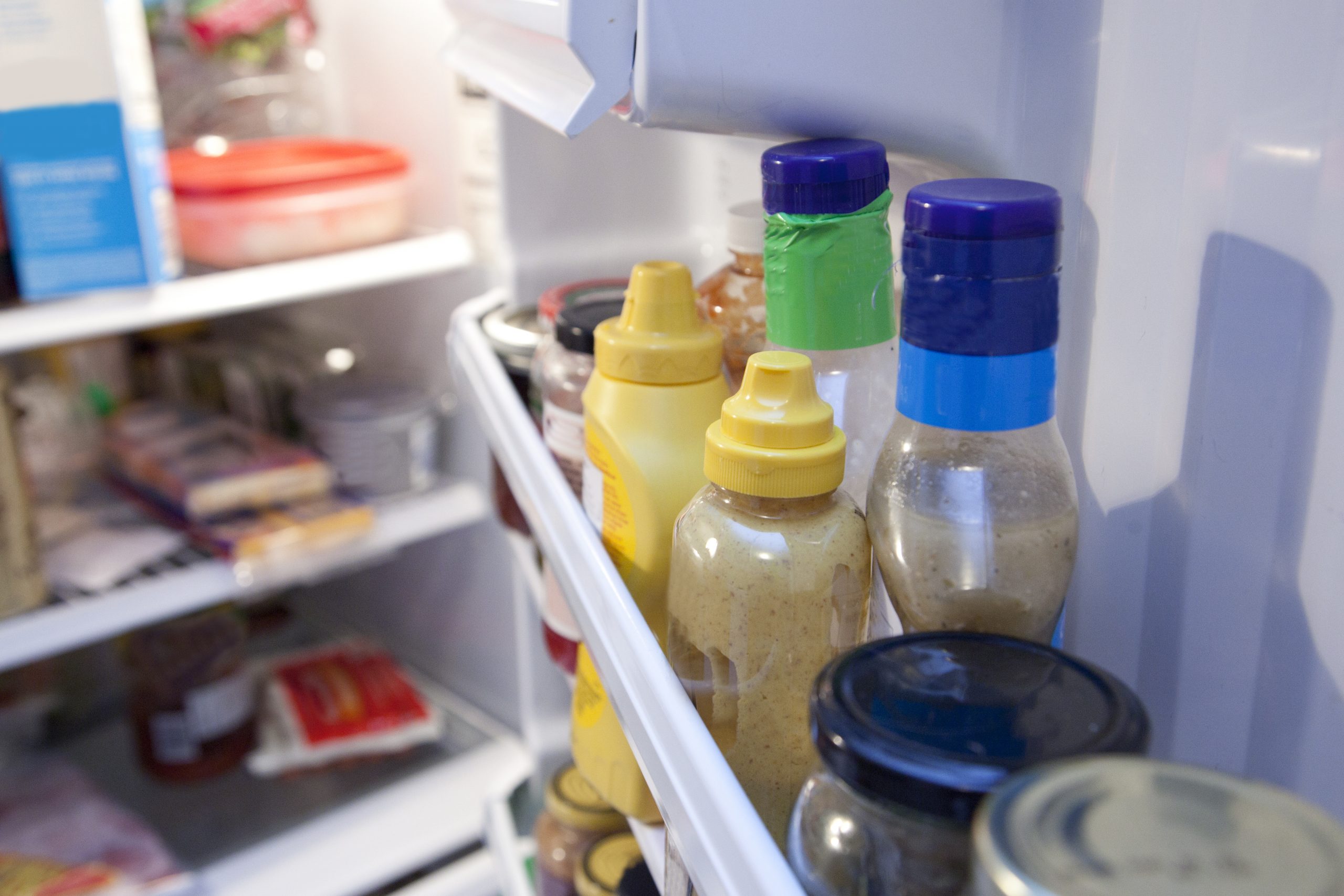
Clue: it's not milk.
Like pretty much everyone we know, you probably store your milk in the fridge door, but this is not the best place, so ignore all the fridge adverts you’ve ever seen.
The temperature inside a fridge can be inconsistent over time, fluctuating from place to place, too. Just like your oven, your fridge can have hot spots and cool ones. This affects your food’s quality and longevity. And the door is the warmest part of the fridge and most likely to have a fluctuating temperature, just think: every time you open the fridge door, you're dragging all the foods stored there into what's likely the hottest room in your house.
The same applies to eggs, which can be confusing as most fridges come with built-in egg racks on the door. The same temperature fluctuations that can affect milk can also make eggs go rotten more quickly, so it's best to keep them in the fridge, preferably in the middle shelf.
The fridge door should be home to foods that are natural preservatives, like jams, condiments, pickles and preserves, not milk or eggs.
What should you keep on the upper shelves?
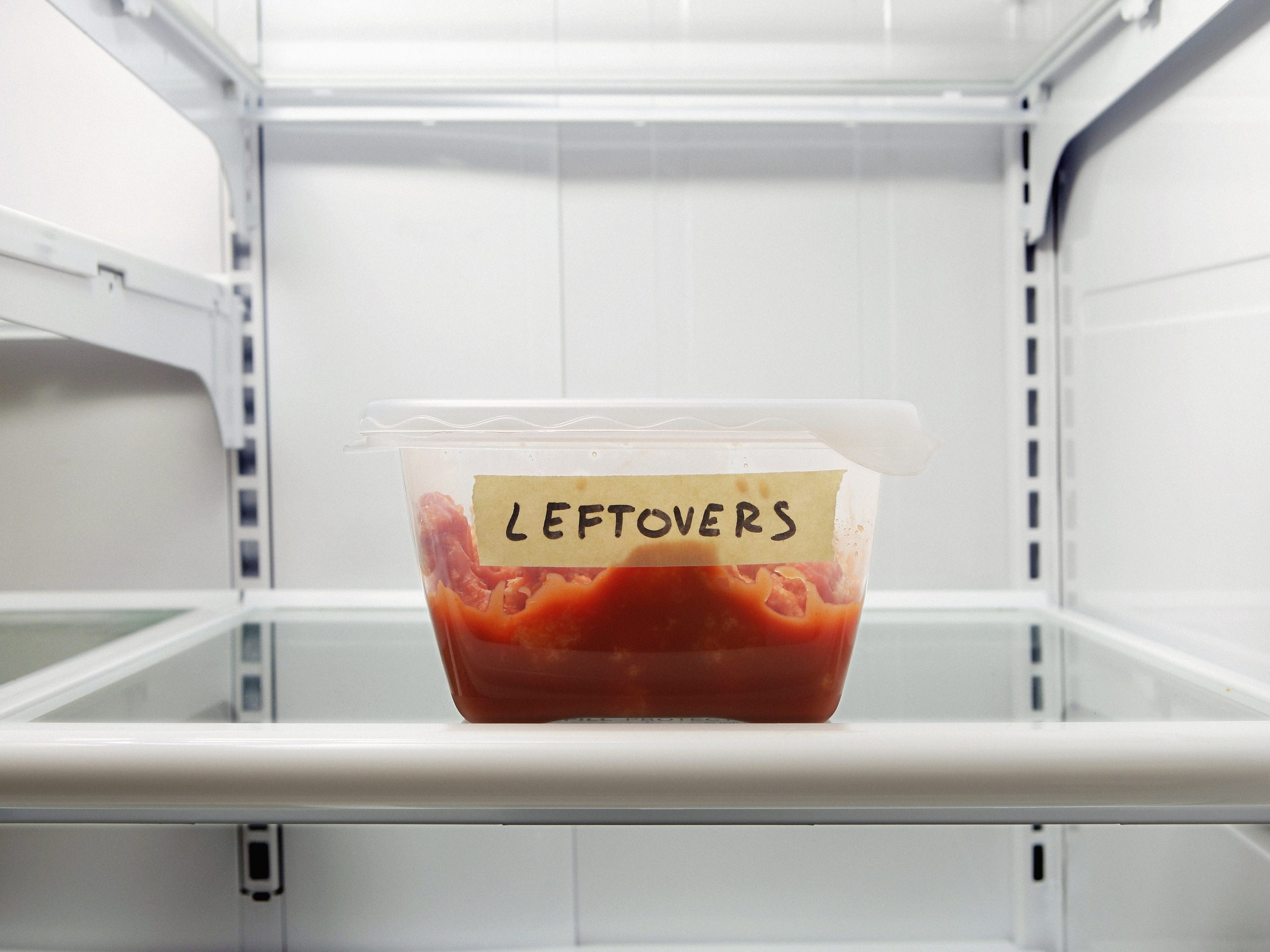
According to Warwick University, you should always keep 'cooked' food above 'raw', as any spillages or drips may well land on other foods below.
In the higher shelves of your fridge you should be keeping foods that don't need cooking like deli meats and leftovers packed into plastic boxes, so there's no chance of anything dangerous contaminating the other things you're storing below.
What should you keep on the middle and lower shelves?
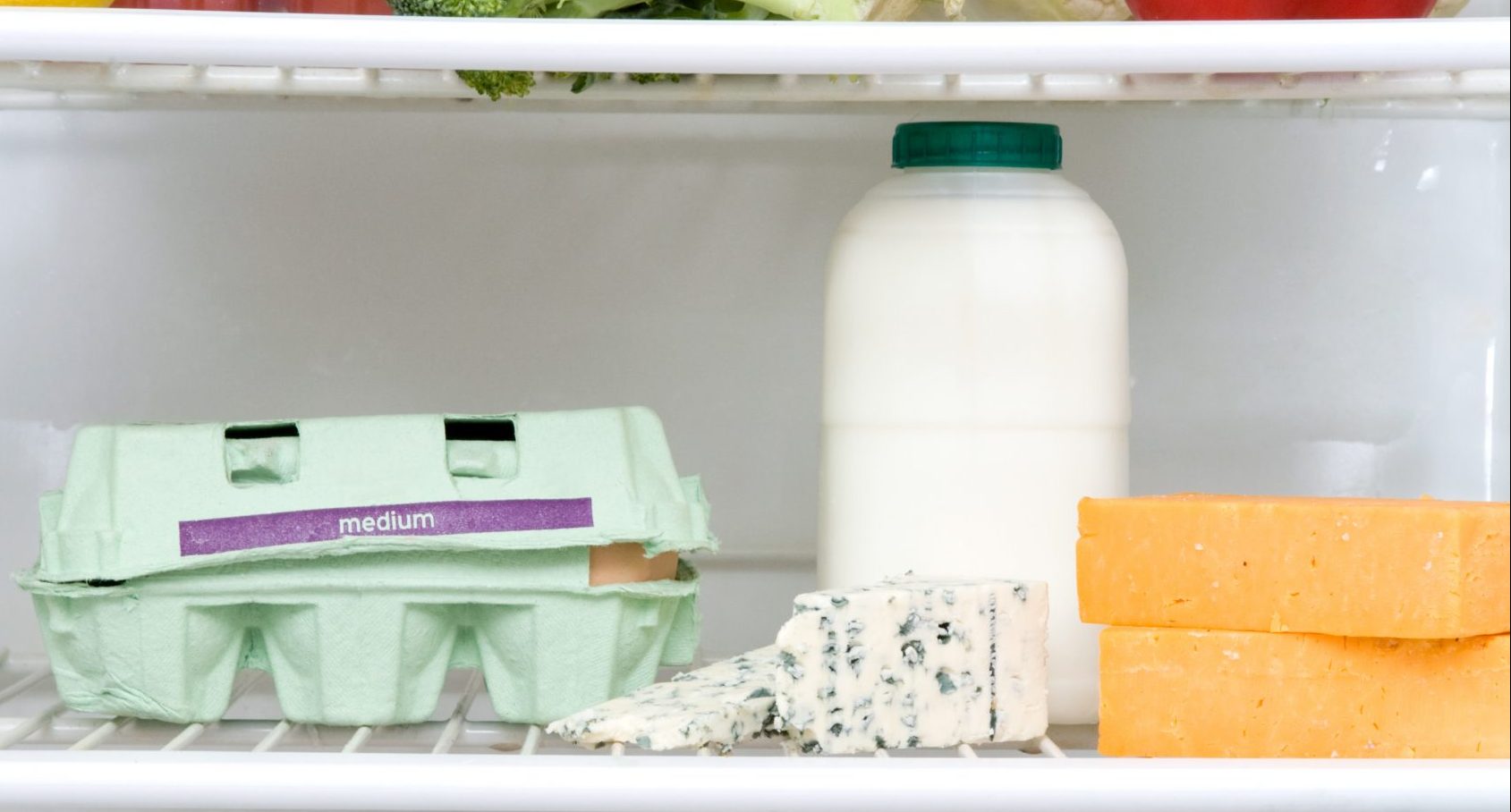
The lower and middle shelves of your fridge should be reserved for dairy like milk, cheese and yogurt, which need to be kept nice and cool as well as being surrounded by well circulated air. If you keep your eggs in the fridge then these should also be kept in the middle shelf too, as mentioned above. This is because eggs should be kept at a constant temperature, according to the NHS.
Some softer dairy can be kept in the door shelves as they will keep well there and it'll mean it keeps the perfect texture for tucking into thanks to the milder temperature.
What should you keep on the bottom shelf?
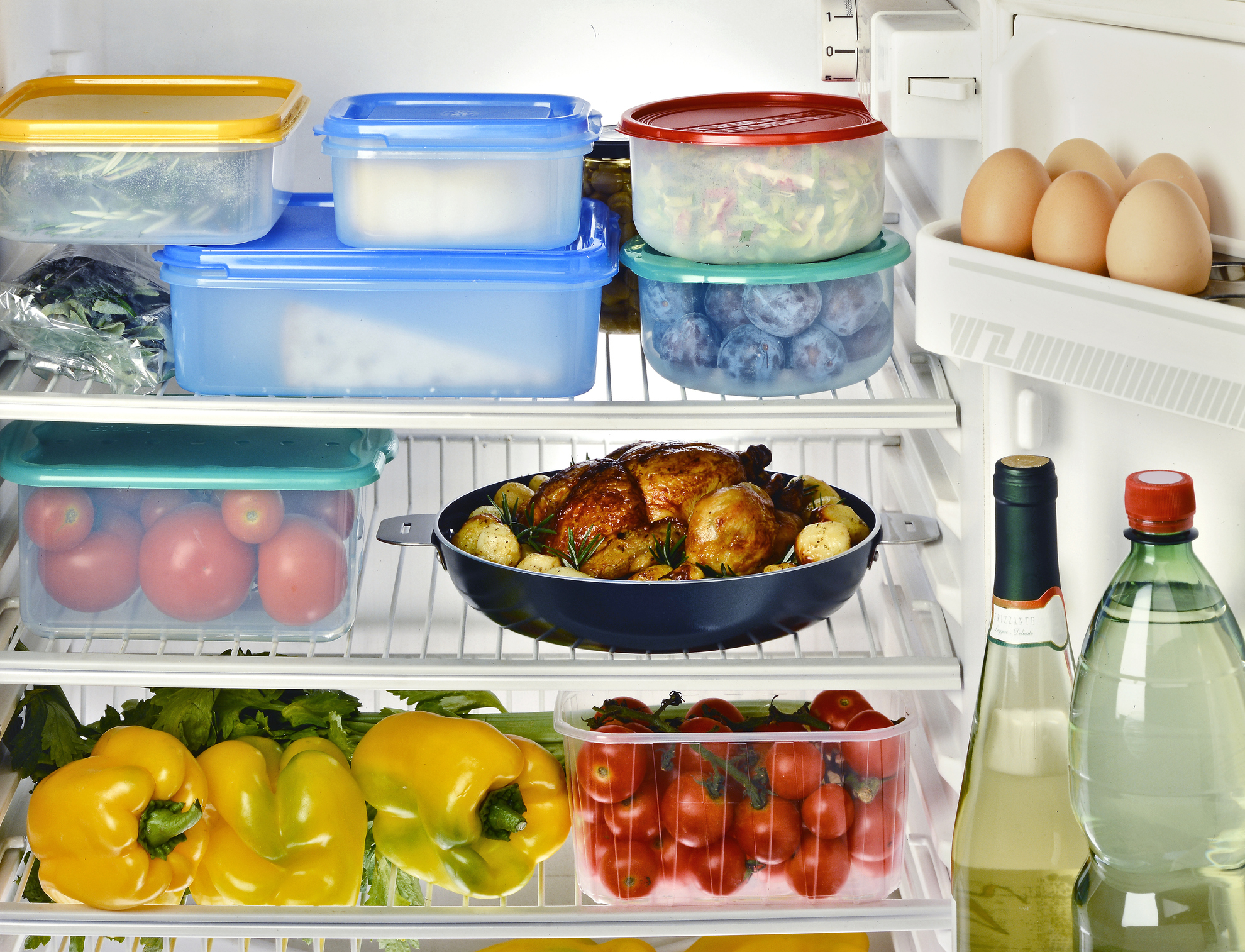
The NHS advises that you store raw meat and fish on the bottom shelf. This is because it's the coldest part of your fridge, and the cold temperature will keep it from going off. This also avoids it getting in contact with other foods in the fridge, which could lead to contamination. For this reason it's also best to make sure your bottom shelf is made of one sheet of plastic and glass and not the wire slatted kind that are often used for the higher shelves.
To store raw meat and fish, don't forget to keep it well covered and sealed to keep the possibility of spilling blood and juices onto other foods to a minimum.
What should you keep in the drawers?
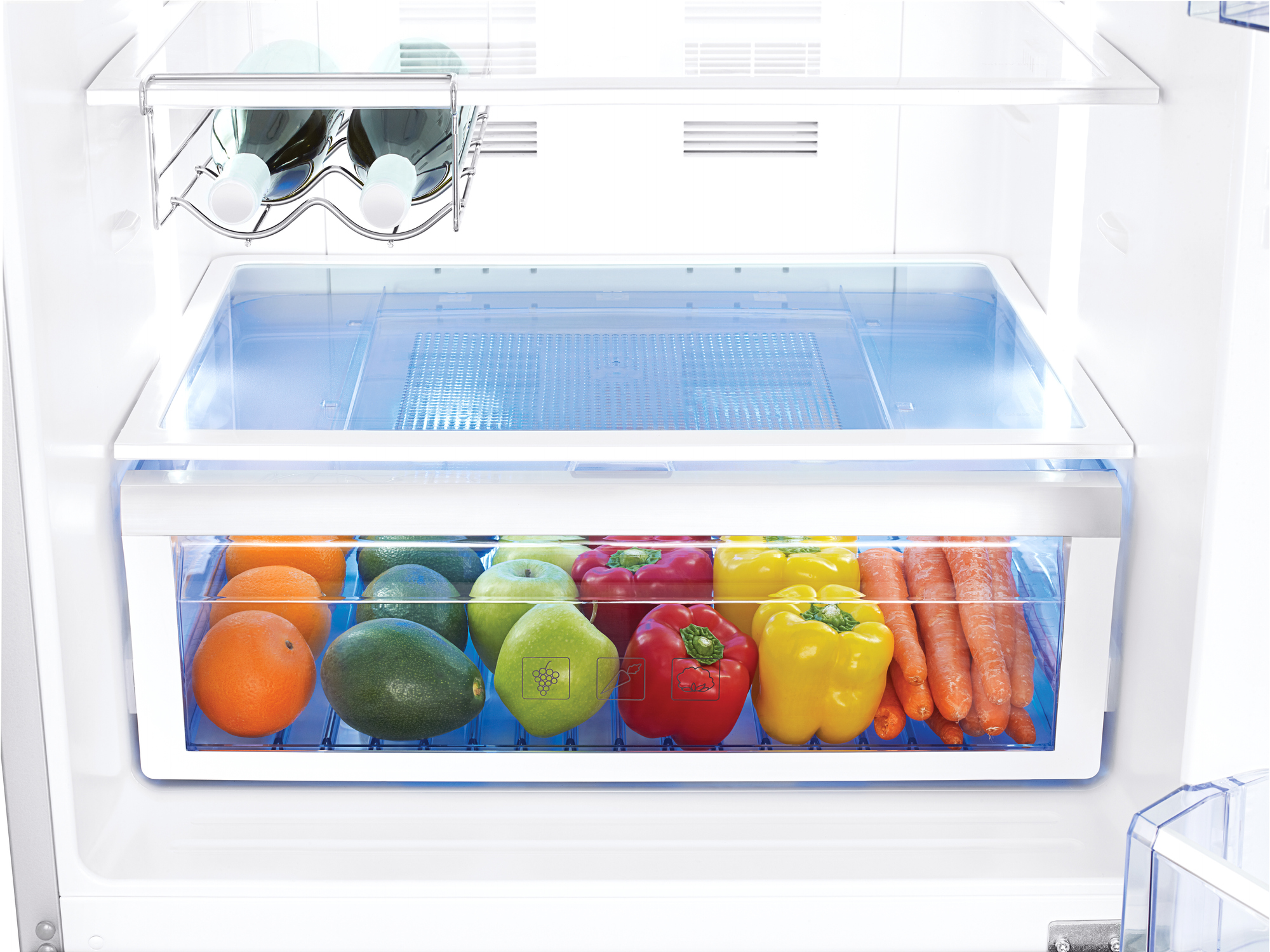
The Food Standards Agency advises you keep your veg and fruit in the drawers in your fridge, as they're lifted from the bottom of the fridge to avoid softer leaves on vegetables like lettuce from freezing, while still keeping things nice and cold - to help them last longer. The drawers are where you should keep your fresh produce like vegetables and fruit, and your fresh herbs. Because they will be enclosed in the drawer, it will also keep them safe from contamination and smells.
What's the correct temperature for a fridge?
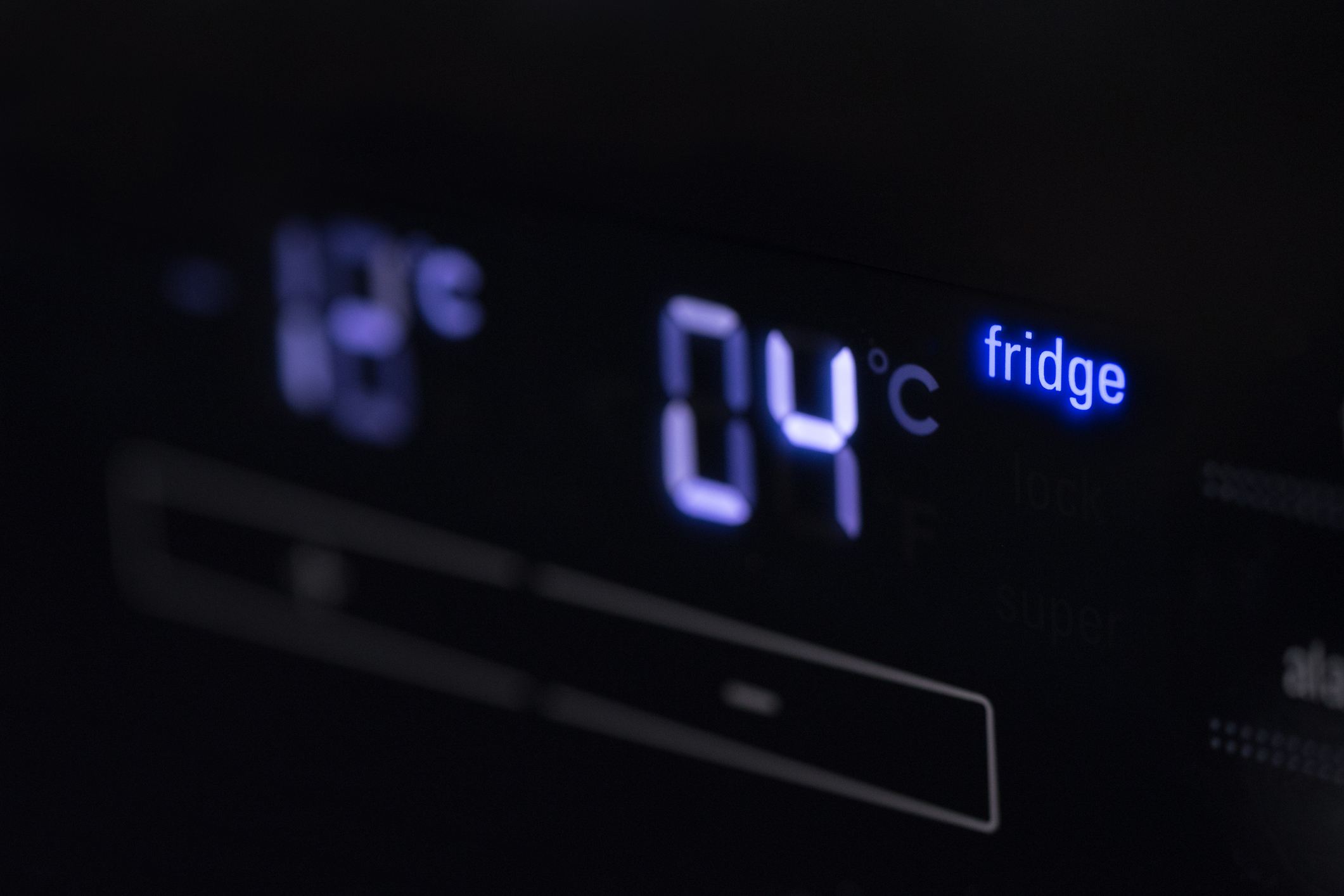
Chilling food properly stops harmful bacteria in its tracks, helping to make sure you and your family aren’t at risk of tummy bugs. Though, half of us don’t know what the optimal temperature of our fridges should be to ensure its contents don’t go off earlier than expected. Food waste charity WRAP has said British people aren’t aware exactly what temperature is needed which can, in turn, lead to more food waste.
According to the Food Standards Agency (FSA) using a fridge thermometer is your best bet as the dials on and in fridges don't always show the right temperature. The coldest part of the fridge should be below 5°C. WRAP reported in 2018 that the average fridge in UK homes runs at 7°C which is too warm. Also, try not to overfill your fridge, leave space for air to circulate which also helps to maintains the set temperature.
Top tip: If your fridge is looking full, take out items that don't need to be chilled, such as beer or wine, to make room for the items that do need to be chilled for safety reasons, such as raw, ready-to-eat and cooked food.
How to clean a fridge
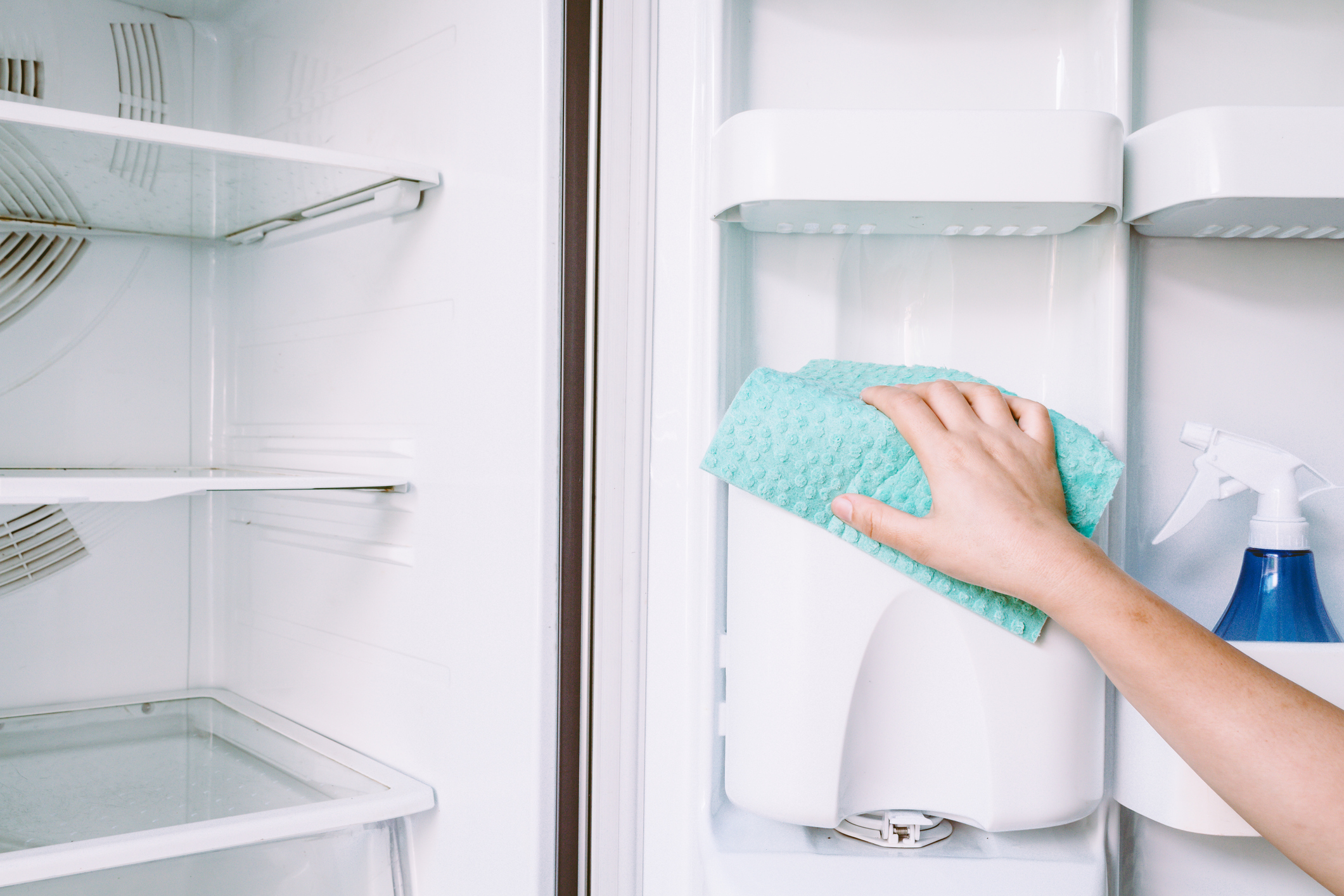
There are two ways to clean your fridge; there’s the weekly ‘before you put your food shopping away’ clear out, throwing out of date foods away, wiping down shelves. And The Deep Clean, which should happen every 3-6 months. Either way, when it comes to cleaning your fridge, it doesn’t have to take you all day, it can be done in 30 minutes in four steps.
1. Remove everything
First you need to empty your fridge of all its contents. Bin what’s out of date and any leftovers that have been in there a little too long.
Be mindful that bacteria can multiply at room temperature, so if you can, put dairy and meat products in a cool box. If this isn’t an option, then maybe empty your fridge and clean it one section at a time and if that’s not something you can do then just work as fast as you can to limit the tim.
2. Clean out
Anything that can be removed, i.e. Draws or shelves, should be removed – if in doubt check your manual to avoid any damage. Next, using warm water and soap wash down all shelves and draws. Use a toothpick, cotton bud or skewer to remove food residue that has collected in any joins. Rinse and leave to dry.
3. Clean in
While the shelves are drying, spray the inside of the fridge with a solution of two parts vinegar one part water, leave for 10 minutes then wipe down with a cloth. Wipe the bottoms of all jars going back in – we’re looking at you sticky jam jars and ketchup lids. You want everything you return to the fridge to be clean to avoid spreading dirt around.
4. Return everything
Once shelves are dry put them all back. Next return all your newly wiped down contents. If you’ve done this before putting the shop away, you’ll have a clear view of where new items can go.
Best fridge organisers and storage containers
Half the battle of keeping a fridge clean and tidy is having the right storage in place. Especially if, like many fridges in the UK, you have been keeping your fridge in the door. In order to keep it anywhere else means you may have to remove a shelf. And if that is the case then clever storage is what you need to make the most of your fridge space.
Fridge bin, Wilko, from £3.25

These are perfect for separating meats, or to keep all the sandwich making kit in one easy-to-pull-out bin.
Kilner glass jar 1.5l, Robert Dyas, £6.49

Store berries, fruit and veg in glass jars with lids and they will last much longer and look great in your fridge.
Joseph Joseph Tiered Organiser, John Lewis, £15
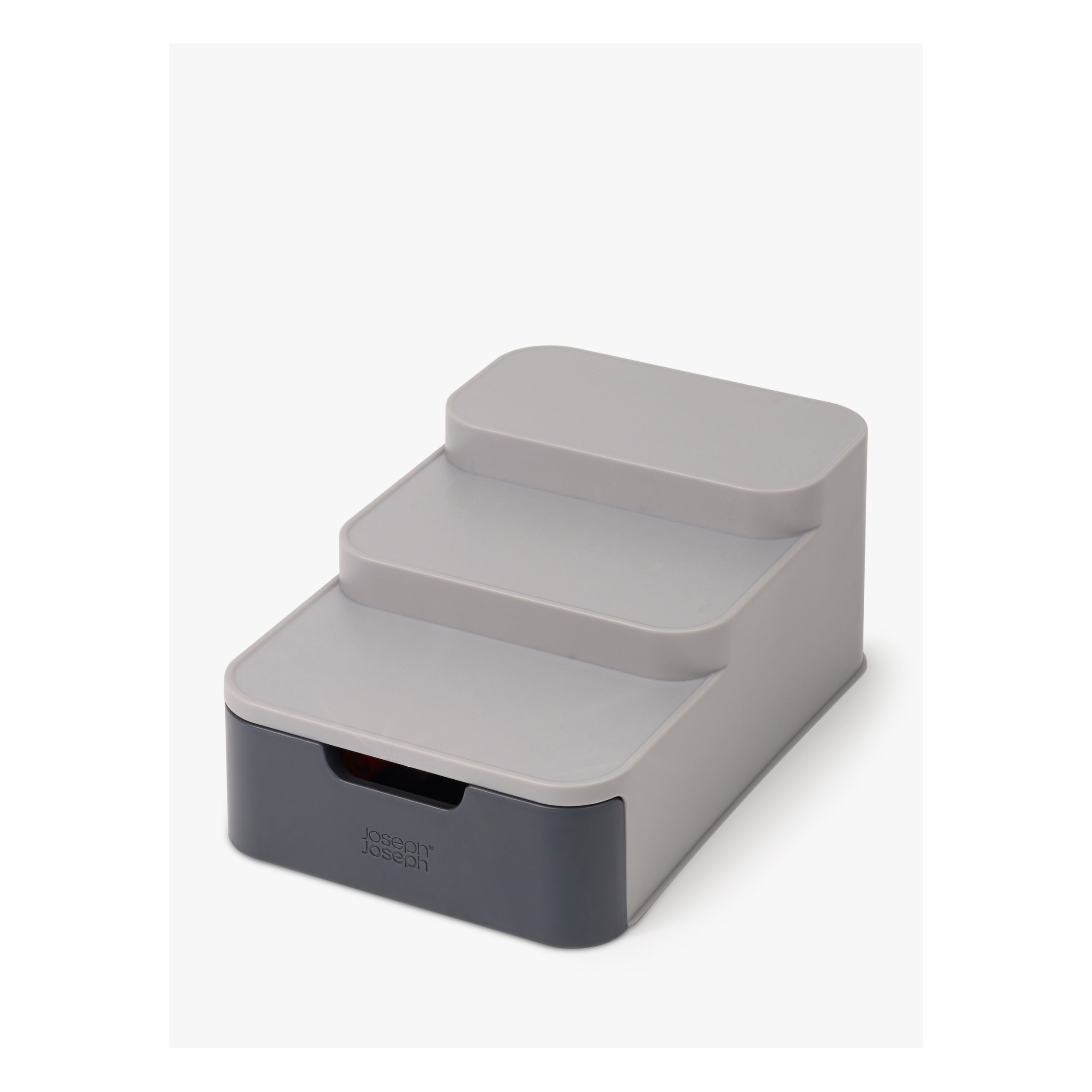
This is an easy and stylish addition to fridge or cupboard to gain an extra layer of storage.
Single Tier Storage Turntable, John Lewis, £12
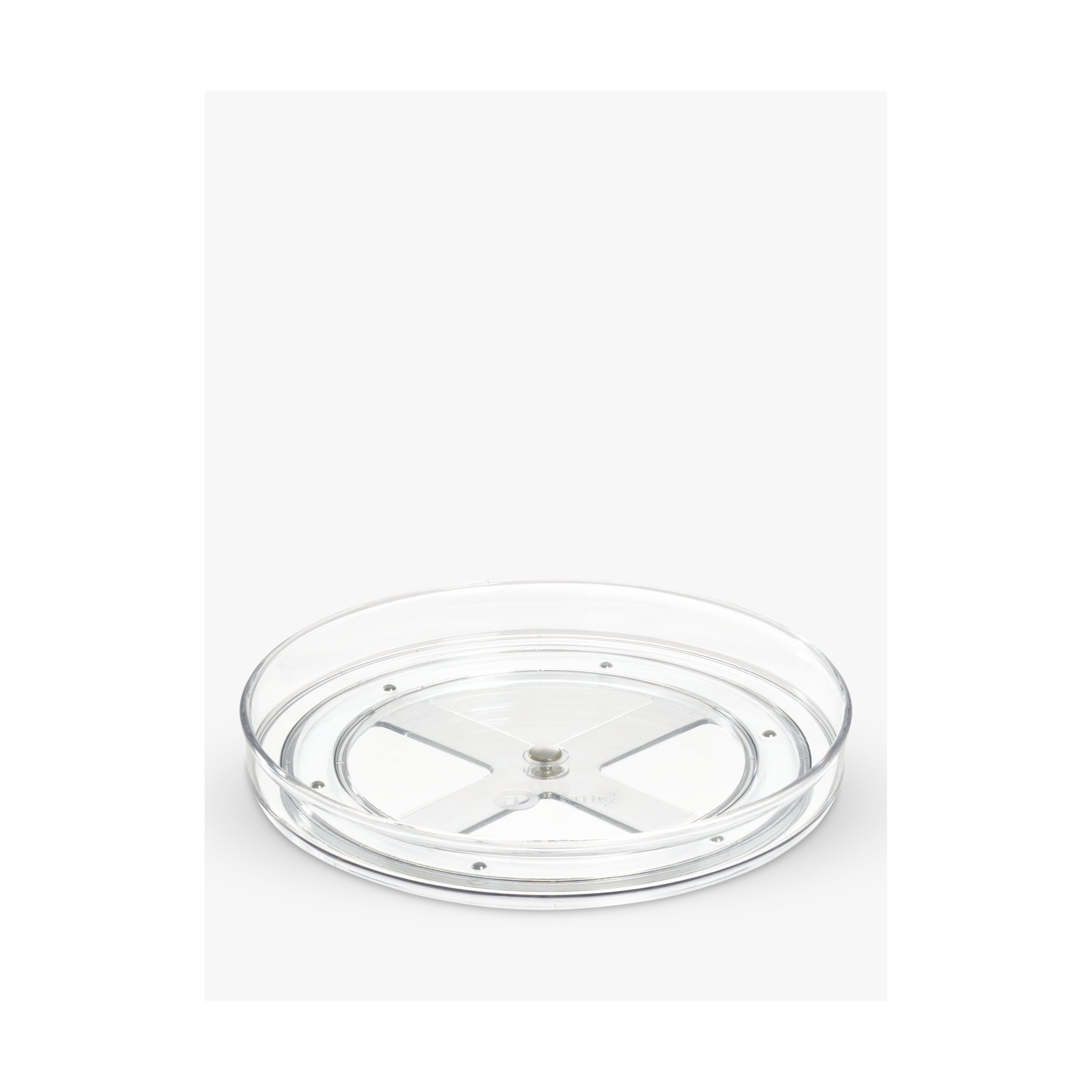
Handy little gadget for storing lots of condiments in an easy-to-see way.
Fridge storage
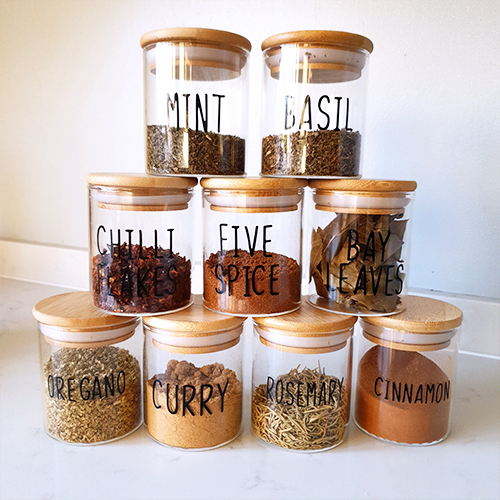
With a selection of sizes and fonts, these labels are great if you want your storage to make a stylish statement.
Trusted, informative, and empathetic – GoodToKnow is the ultimate online destination for parents. At GoodtoKnow, our mission is 'simple': we're trying to make sense of parenthood. On the site, you'll find everything you need for a happy, healthy family life. Our huge archive of content includes more than 18,000 articles and 1,500 how-to videos. These include expert-backed advice features on parenting, dealing with relationship changes after having a baby, self-care for mums and managing your family finances. We also feature tried-and-tested product reviews and buying recommendations for every stage of family life - from prams and Moses baskets to birthday gifts and top toys.